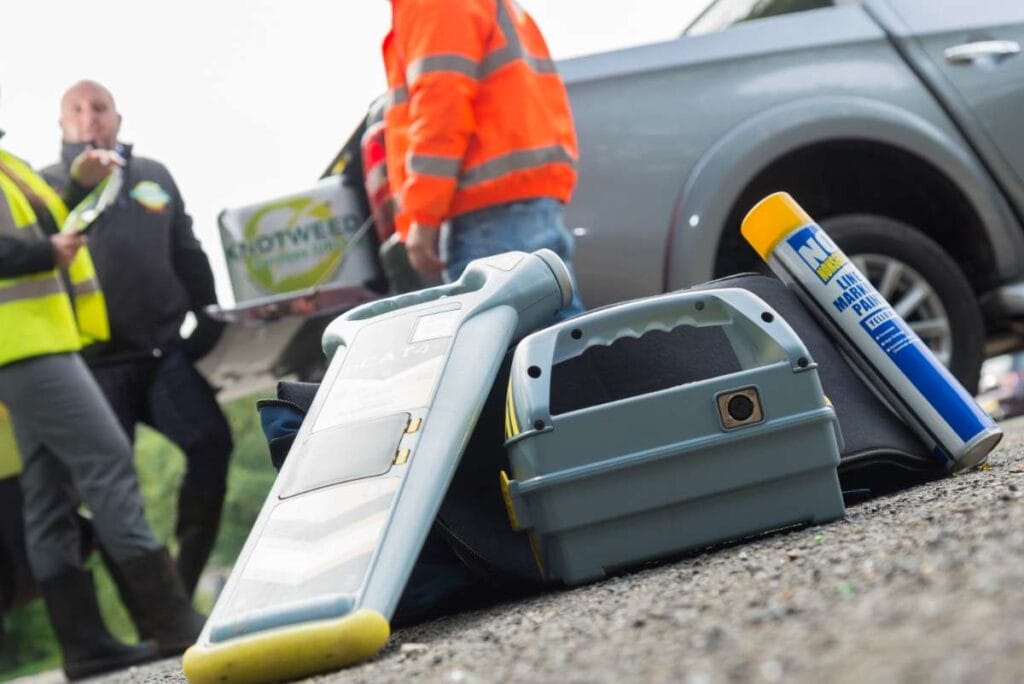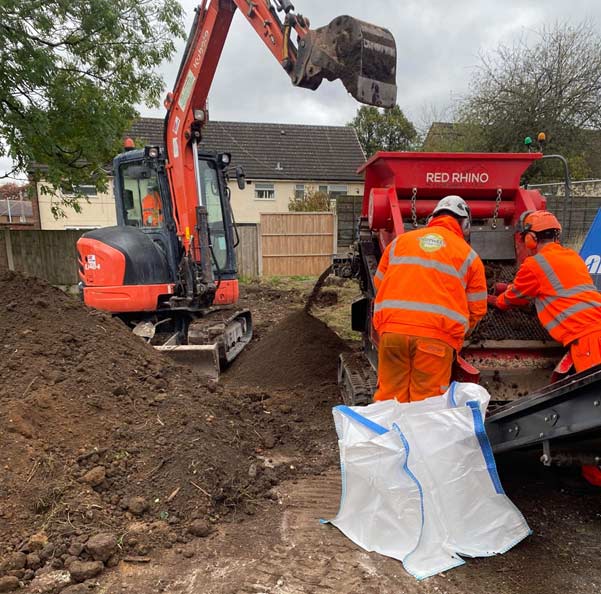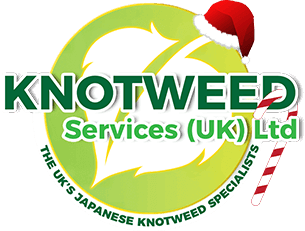JAPANESE KNOTWEED REMOVAL Ledbury
2
LIVE KNOTWEED JOBS IN Ledbury
76
SUCCESSFUL KNOTWEED REMOVAL PROJECTS IN Ledbury
100%
SUCCESSFUL PROPERTY SALES AFTER TREATMENT
4
Ledbury BASED KNOTWEED STAFF
NO OTHER JAPANESE KNOTWEED COMPANIES IN Ledbury HAVE OUR TRACK RECORD
At Knotweed Services , we pride ourselves on our ability to provide Japanese knotweed treatment, control, and removal services that leave our clients completely satisfied. Our unmatched expertise, combined with our many years of experience, has enabled us to earn a reputation for quality that other Japanese knotweed companies in Ledbury simply cannot match.
Knotweed Services is a member of the PCA, a government-approved trade body for “the damp, waterproofing, wood preservation and invasive weeds industries.” We can be trusted to deliver effective methods for Japanese knotweed removal.
For knotweed eradication to be successful, identification, surveying, treatment, and prevention must occur. Our company can help you by providing these services.
The Truth About Japanese Knotweed
Japenese Knotweed has many negative impacts on the properties it infests. Mortgage lenders are usually unwilling to lend against homes that have an infestation. This impacts both buyers and re-mortgagees because these lenders will not lend against the property.
If you are a homeowner or commercial land-owner, and Japanese Knotweed is on your property, you may have to wait until the invasive plant is removed properly and legally before your project can proceed.
Japanese Knotweed: What it is and How to Deal With It
- The invasive plant Japanese Knotweed can grow through tarmac and concrete, posing a structural threat to buildings.
- Lenders often refuse to lend against a building that is infested with Japanese Knotweed.
- Knotweed obstructs paths, highways, and other infrastructure with large, dense patches. The weed is a particular problem for commercial properties—both in terms of dealing with the plants themselves and the access that is blocked by them.
Knotweed Services – We offer a guaranteed solution to Japanese knotweed in Ledbury. All of our services are guaranteed for years to come.



FREE IDENTIFICATION
Fill in the form below, attach your pictures and we’ll let you know if the plant in your picture is Japanese Knotweed.
Call Knotweed Services today to undertake the treatment and management of your infestation in Ledbury
Call us on: 0121 725 6348 or 0800 689 4146 for an swift estimate
Knotweed Services will walk you through the process from start to finish.
RESIDENTIAL JAPANESE KNOTWEED REMOVAL Ledbury.
WHAT YOU NEED TO KNOW ABOUT JAPANESE KNOTWEED REMOVAL Ledbury
Knotweed differs in size and severity from property to property, so treatment of the invasive plant will also vary from situation to situation.
Since Japanese knotweed is a natural phenomenon, our experts will consider site-specific factors when making treatment decisions. An insurance-backed guarantee is available.
— JAPANESE KNOTWEED REMOVAL OPTIONS AVAILABLE IN Ledbury

FOLIAR SPRAYING *
Spraying of powerful chemicals with a knapsack is the most common treatment for Japanese knotweed. We ensure that other plants are not damaged when spraying, and we spray only in springtime.

FOLIAR LEAF WIPING *
With this Japanese knotweed treatment, we use a device to ‘physically wipe’ our chemicals onto the Japanese knotweed leaves. Because this use is so exact, we can often utilise a larger concentration of chemical.

STEM INJECTION
A measured amount of herbicide is applied directly to the invading plant. This is the most ingenious way of elimination because the herbicide is injected straight into the Japanese Knotweed. Not dependant on weather conditions.

BIOMASS REDUCTION
Biomass is a type of excavation and removal, however instead of extracting all of the soil impacted by Japanese Knotweed, we simply remove the afflicted areas of the soil. It’s an outstanding Japanese Knotweed control approach that enables for soil reuse. Reducing the use of landfill.

CROWN REMOVAL
Crown and stems can regenerate, and even small bits of chopped crown or stem can regenerate and become a new invasive weed; removing these from the equation is a fantastic method.
— COMMERCIAL TREATMENT OPTIONS AVAILABLE IN Ledbury

SOIL SCREENING
A tried-and-true methodology utilised on hundreds of sites across the UK.
The rhizome material of Japanese knotweed is removed from the soil material using the screening procedure. The Japanese knotweed debris is then either transferred to a licenced landfill at a significantly reduced disposal rate or burnt on site using a D6 exemption from the Environment Agency or Natural Resources Wales.
The cleaned soils can subsequently be used elsewhere, typically in soft landscaping areas where they will not interfere with construction.
This can greatly cut landfill and backfill expenses while also helping to minimise the carbon impact on site due to fewer truck travels to the dump.

BIOSECURITY SUPERVISION
We could send a biosecurity specialist to your site to keep an eye on any soil movements or excavations that can disturb Japanese knotweed.
We can set up a location at the site entry where individuals can wash their boots and equipment as part of these precautions. All toolbox discussions, which will be signed by all on-site contractors involved in the operation, will be provided to the principal contractor by us.
Where biosecurity is required, we may offer ad hoc geotextile barriers.
We will deliver a thorough biosecurity report to the client after the task is finished.
This approach can be utilised in conjunction with several on-site therapy approaches.

EXCAVATION AND DISPOSAL
This treatment method is ideal where time constraints are present and there’s no other option other than to remove both the Japanese Knotweed and contaminated soil to a registered landfill.
By removing all traces of the infestation quickly, this offers a rapid solution to your problem and allows your commercial project to begin groundwork’s almost straight away. When time is of the essence, there is no quicker Japanese Knotweed removal/treatment method.
Any waste taken off-site will be done so with a licensed waste carrier to a suitably authorised landfill site.

CELL BURIAL
Cell burial comprises of moving Knotweed contaminated soil from one location on site, burying it in an excavated pit which is lined with a root barrier membrane, in a different position on the site.
The burial requirements for Japanese Knotweed are as follows:
- The Environment Agency recommends that the top of the burial cell should be a minimum of 2 metres below ground level.
- The overall depth of the burial pit should be in excess of 5 metres deep. All root barrier seams are welded together forming an encapsulated cell from which the Japanese Knotweed cannot escape. Clean soil is then used to backfill on top of the cell.
- To prevent accidental disturbance of the burial site, it is recorded on all site plans and future land owners should be made aware of the location.

STOCKPILE & TREAT
Bunding is the method of relocating contaminated Japanese Knotweed soil to a different area of the site being treated. A bund is a shallow area of the contaminated soil, typically 0.5m deep.
The bund can either be raised, on top of the ground, or placed within an excavation to make the surface flush with the surrounding area.
The purpose of the bund is to move the Japanese Knotweed to an area of the site that is not used. This ‘buys time’ for treatment that would not be possible where the Japanese Knotweed was originally located.

HERBICIDE APPLICATION
At Knotweed Services we can provide the client with bespoke treatment plans depending on the locations of the Japanese knotweed.
These plans can work in conjunction with other methods of treatment where access is limited to pedestrian movements i.e., embankments or existing pathways within a site.
This will normally consist of up to 3 visits per annum to apply herbicide by either foliar spray technique or stem injection during the growing season over a period of 3 years, with a monitoring period of 2 years thereafter.
We would select the appropriate herbicides depending on the surrounding foliage or environmental constraints.
After each visit a full treatment record would be provided with photos showing the progress of the works and then an annual report.
